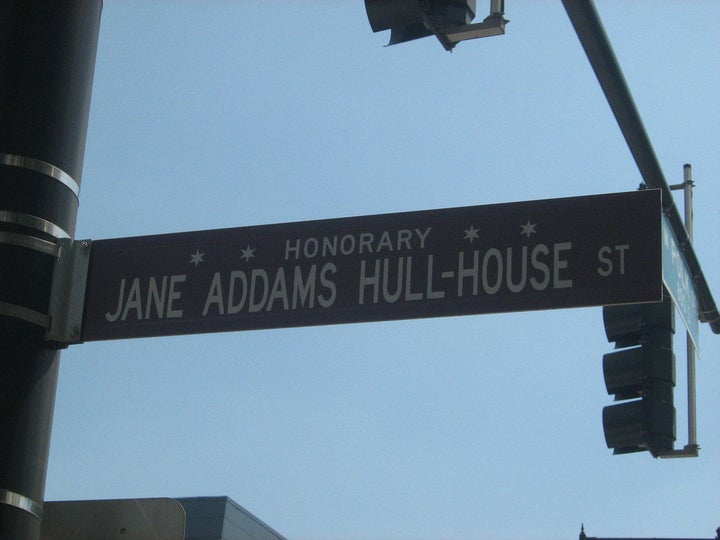
Chances are the number of your family members and friends who attend a single wedding or graduation party this spring or summer will be greater than the world's total number of Nobel Peace Prize laureates. The prize has been awarded 92 times since its inception in 1901. Since the prize has sometimes been shared, the total number is 122, since 99 have been given to individuals and 23 to organizations.
Each one of those laureates has a story to tell.
Chicago shares in the history of three laureates: the world-famous President Barack Obama, the long forgotten banker and vice president, Charles G. Dawes, and the co-founder of the recently demised Hull House and the first American woman to receive the prize, Jane Addams.
Why did these Chicagoans receive the Nobel Peace Prize? The question may arise from curiosity, but also from a sort of amazement that anyone could merit the tremendous honor the Nobel Peace Prize has become. People wonder -- are the laureates true heroes? The answers to the question for these Chicagoans are intriguing, for none turns out to be the kind of hero we like to imagine, the kind that slays the dragon of war single-handedly. Indeed, whether each prize winner appeared deserving often depended, strangely enough, on timing.
In the case of the banker Charles G. Dawes, he looked successful at the time, but that did not last. A brigadier general in World War I, he was named to chair an international Committee of Experts in 1923 to propose a plan to restore stability to Germany's devastated economy, a step thought essential to avoid another war. The result was the Dawes Plan. Dawes went on to become the vice president of the United States in 1925, and later that same year to receive the peace prize at the age of 60. But by 1930, Germany's economy was worsening. Hitler soon rose to power, his popularity fueled by economic fears. One wonders what Dawes thought of his prize later, and whether he displayed it proudly or kept it in the attic, out of sight.
The Nobel Peace Prize Committee's timing was somewhat off for the awarding of President Barack Obama's prize too, but in a different way. Obama had campaigned on the theme of hope, and the committee seems to have joined in his mood. Awarding him a the prize in October 2009, when he had been in office only nine months, struck most Americans, including the president himself, as premature.
Yet those outside the United States had another view. Around the world, people sensed that the new president was going to be different from the last one, who had begun two wars, and whose father as president had begun another. Certainly, in the years since, Obama has not led the nation into any new wars, and is gradually extricating the nation from the two wars he inherited. Though some may contest it, to my mind he is beginning to earn the honor he has already received.
When it comes to Addams, I find myself saying, "She received the prize for her whole life's work," and there is some truth to that. Unlike Obama or Dawes, Addams was in her 70s when she was awarded the prize in 1931 and while her sustained work in the world peace movement began during World War I, she had been committed to nonresistance since her 20s. To her, war was just one manifestation of the dangerous uses of force. Others included unjust working conditions, domestic abuse, and the harm done the nation by disenfranchising Southern African-Americans and women. In 1915, with thousands of other women, she co-founded the Women's International League for Peace and Freedom. With Addams as its first president, the organization advocated for peace to the now-defunct League of Nations in Geneva; today it does the same to the United Nations. Though her work for disarmament stalled and she knew another world war was on the horizon, she kept on speaking and writing for peace until her death in 1935.
For Addams' prize too, timing was an issue. Many of her friends thought she should have received it long before she did. Perhaps the problem was her gender: as a woman she had to have a lifetime of achievement behind her before anyone noticed. Today, happily, it does not take women so long to have their contributions to peace recognized. As the second woman in the world to receive the prize (the first was a peace activist who was a friend of Alfred Nobel's), Addams helped break the gold medal ceiling.
In two weeks, 23 Nobel Peace Laureates will gather in Chicago at the World Summit of Nobel Peace Laureates. Four women peace laureates, including Dr. Shirin Ebadi of Iran and Jody Williams, founding coordinator of the international campaign to ban landmines, will discuss how women forge peace. Obama, the only one of Chicago's three prize winners still alive, will not be attending -- at least as far as anyone knows. But former president Mikhail Gorbachev of Russia, former president Lech Walesa of Poland and former U.S. President Jimmy Carter will be there, discussing how peace must be sought through a multi-nation strategy.
Watching the live stream of, reading about or attending the summit, we will learn these laureates' stories, and our curiosity will be fed. And we will be amazed, not that they are dragon-slayers of war, but that they are human beings like the rest of us who have done something we can all do -- care enough about peace to try to do something to make it more present in the world.